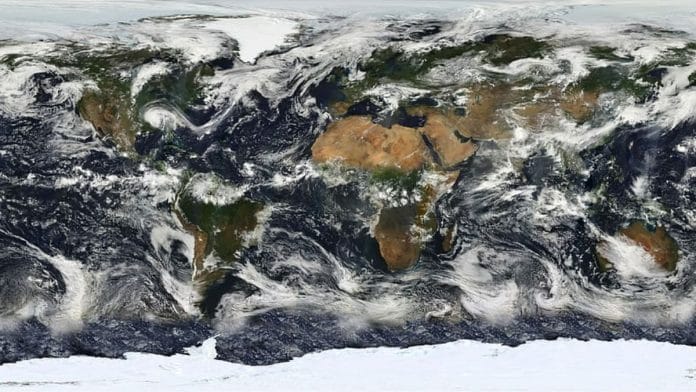A new era in weather forecasting has arrived – fuelled by artificial intelligence.
Google DeepMind, Google’s AI research laboratory, is developing a machine learning model that it says can accurately predict weather in seconds – not hours – and outperforms 90% of the targets used by the world’s best weather prediction systems.
The AI marks a “turning point” for weather forecasting and decision-making, the scientists at Google DeepMind say.

GraphCast, an AI weather forecasting model, uses historical data to accurately predict future weather. Image: Science / Google DeepMind
How does AI weather forecasting work?
Called GraphCast, Google DeepMind’s AI weather forecasting model has been trained on almost 40 years of historical weather data to improve its accuracy, explains the publisher, Science.
Training the AI took four weeks and 32 computers.
But the algorithm this produced can predict weather up to 10 days away in less than one minute on a single desktop computer.
GraphCast’s accuracy significantly beats current weather systems on 90% of 1,380 metrics.
The AI is also better at forecasting severe weather events, including extreme temperatures and the tracking of tropical cyclones, the Google DeepMind scientists explain in their Science journal paper.

The AI tool is better at predicting severe weather, like extreme heat and the path of cyclones. Image: Science / Google DeepMind
How does conventional weather forecasting work?
Weather forecasting currently involves powerful supercomputers – high performance computers – making complex calculations based on observations from weather stations, satellites and buoys.
This is a costly and time-consuming process. Specifically, it takes six hours for the European Centre for Medium-Range Weather Forecasts in Italy to produce the world’s most accurate weather forecasts, Google DeepMind scientists explain.
This process repeats every six hours, typically four times a day, every day.
The supercomputers use an approach called “numerical weather prediction”, an intensive process which involves cracking the governing equations of weather.
Why is AI better at predicting the weather?
But the Google DeepMind scientists say GraphCast can predict weather more cheaply and accurately using historical weather data.
The AI can identify patterns in the data that are not easy to see in equations. It can then use these findings to improve the accuracy of weather forecasts.
GraphCast is also about 1,000 times cheaper in terms of energy efficiency than conventional weather forecasting methods, reports the Financial Times.
Google is one of the partners in the World Economic Forum’s new initiative, the AI Governance Alliance, which is bringing together stakeholders to ensure the responsible design and roll-out of the technology.
GraphCast itself could be rolled out to forecast other problems, the Google DeepMind scientists say, “including climate and ecology, energy, agriculture, and human and biological activity”.
The technology could therefore help in the prediction of extreme weather events caused by the climate crisis, which the Forum’s Global Risks Report 2023 named as one of the top 3 global risks in the coming 2 and 10 years.






